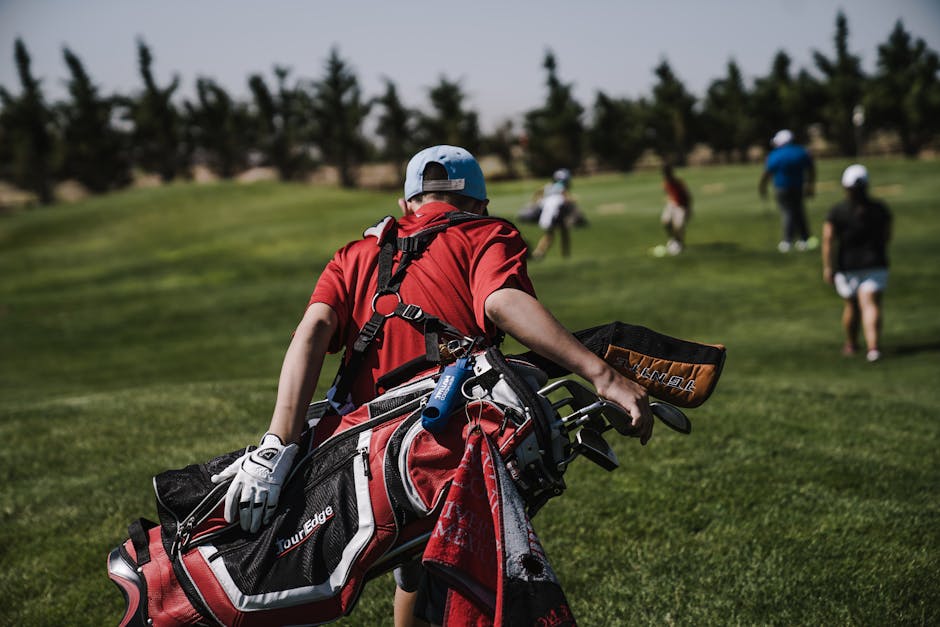Golf Speak: A Comprehensive Glossary of Golf Terms
Golf, often considered the sport of patience and precision, comes with its own unique jargon. Understanding golf terms is essential for both beginners and seasoned players to improve communication on the course. This comprehensive glossary covers essential golf terms, answering common questions and providing valuable insights into the sport’s unique vocabulary.
Golf Basics: Teeing Off
Tee Box: The starting point of any hole, where players make their first stroke. The tee box is marked by two teeing grounds, allowing players to set up their balls within this area.
Drive: The first shot taken at the tee box, usually with a driver or long-distance club, aimed at covering as much ground down the fairway as possible.
Fairway: This is the ideal landing area after the tee shot, characterized by well-maintained grass shorter than the surrounding rough areas.
Rough: The tougher, often longer, grass bordering the fairway. Balls landing here are harder to play, often reducing shot accuracy and distance.
Navigating the Green
Green: The smooth, carefully mown grass area surrounding the hole. The goal in golf is to get the ball into this area to set up for putting.
Pin/Flagstick: A flag marking the specific location of the hole on the green, usually removed before putting.
Putt: A gentle shot made on the green aiming to get the ball into the hole.
Standard Golf Play
Par: The number of strokes a skilled golfer is expected to make on a hole, or for an entire course. For instance, a par-3 hole should ideally take three strokes.
Birdie: Scoring one stroke under par on a particular hole.
Eagle: Scoring two strokes under par is known as an eagle, a significant achievement on the golf course.
Bogey: This occurs when a player scores one stroke over par.
Double Bogey: Scoring two strokes over par, indicating more challenges on the course.
Advanced Golf Terms
Handicap: A numerical measure of a golfer’s potential ability based on the courses played and recent scoring history. It levels the playing field, allowing players of varying abilities to compete.
Slice: A common mistake where the ball curves sharply to the right for right-handed players, often due to improper club alignment or swing path.
Hook: The opposite of a slice, with the ball curving sharply to the left.
Chip: A short shot (typically from close to the green), intended to lift the ball into the air briefly and land softly, setting up a putt.
Golf Etiquette and Miscellaneous Terms
Fore: A warning shout when the ball is heading towards a person or group, used to prevent injury.
Mulligan: Informally used in casual play, a “mulligan” allows a player to retry a stroke, not counted in the official score.
Caddie: Assistant who carries clubs and offers advice to a player.
Albatross: Rarely achieved, this is a score of three strokes under par on a single hole.
Commonly Asked Questions About Golf Terms
What is the difference between a bogey and a double bogey?
A bogey occurs when a golfer scores one stroke over par, while a double bogey is when a golfer scores two strokes over par. Each indicates varying levels of challenge faced by the golfer.
How is a golfer’s handicap calculated?
A golfer’s handicap is calculated based on their recent scoring history and the difficulty of the courses played. This system allows players of different abilities to compete against each other on a more even footing.
What should you shout to warn someone of an errant golf ball?
“Fore” is shouted as a warning when it appears a ball might hit someone. This term is crucial for safety on the course.
Conclusion: Enhancing Your Golf Vocabulary
Understanding these golf terms not only helps in improving your game but also enhances your enjoyment and ability to communicate effectively on the course. Whether you’re a novice learning the basics or a seasoned player brushing up on terminology, this glossary serves as a valuable resource for all things golf. Embrace the golf speak, and you may find your next round more engaging and rewarding.
